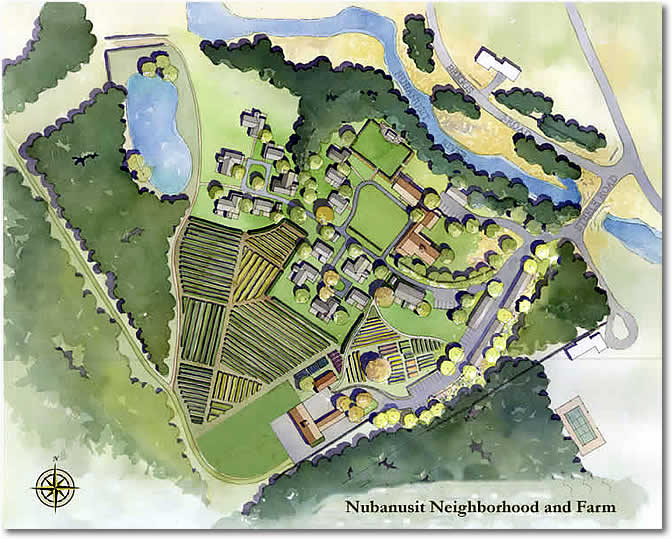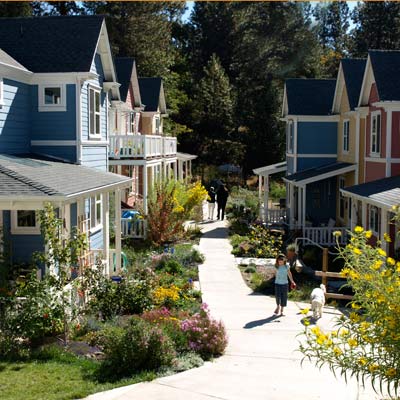ecovillage

myvalleysun.com
October 17, 2013
Bullish on the real news in the Monashee
My Valley Sun
blog
index

Online Community News for Lumby, Cherryville, Rural Coldstream and Highway 6
We update this website on a regular basis. We are eager to receive your news, events, advertising and letters by email at: mediaservices@uniserve.com
Returning to Basics:
Ecovillages in the new “draft” Area D and E
Official Community Plan
For anybody attending the planning meetings associated with the new Official Community Plan for Areas D and E there may have been either bewilderment or perhaps excitement. Either way a snippet of the new OCP may be an indicator of what we may be creating for ourselves in the countryside.
The new official OCP has a section which describes “Special Use Areas” which traditionally helps a local government deal with rules and regulations associated with a development action that they could never predict would be submitted. But in this current OCP the idea of special use is expanded to include Ecovillage Developments.
According to the new Official Community Plan, ecovillages are intentional communities formed with the goal of becoming more socially, economically and ecologically sustainable. Rural ecovillages are usually based on organic farming, and other approaches which promote ecosystem function and biodiversity. Some of the components of an ecovillage are:
• educated commitment to principles
educated commitment to principles
• opportunities for local purchasing
opportunities for local purchasing
• alternatives to purchasing of global energy (e.g. oil)
alternatives to purchasing of global energy (e.g. oil)
• local food
local food
• moral purchasing and decision making
moral purchasing and decision making
• respect diversity
respect diversity
• sustainable design practices
sustainable design practices
Overall an ecovillage is driven by a collective commitment to create an alternative, sustainable lifestyle. Applicants seeking approvals for these projects will need to clearly demonstrate a commitment to sustainability principles and to ensure that the project is consistent with the principles of growth management and rural protection. These uses are not an opportunity for satellite, market driven housing development.
Ecovillage Developments must be recognized through site specific amendments to the Official Community Plan and shall only be considered in conjunction with rezoning to a Comprehensive Development Zone which will define the uses and development regulations specific to the lands in question. As part of the development application review process, or in advance of the application, the Regional District will work with stakeholders to define the terms of development approvals for unique proposals.
Potential stakeholders may include:
• the Agricultural Land Commission
the Agricultural Land Commission
• neighbourhood / community associations
neighbourhood / community associations
• Ministry of Health
Ministry of Health
• Local Health Authority
Local Health Authority
• School District
School District
• Ministry of Transportation and Infrastructure
Ministry of Transportation and Infrastructure
The goal of this review process will be to ensure that new developments contribute positively to sustainable rural character in the plan area.
Ecovillage Developments must establish efficient, cost effective wastewater management systems. While conventional septic disposal systems may be appropriate for rural, large lot areas, it is no longer viewed as an acceptable means of wastewater management for new or expanded resort and ecovillage developments. Ecovillages may elect to pursue alternative development strategies but will need to clearly demonstrate the long term viability of such initiatives, providing the appropriate supporting professional reports.
Ecovillage Developments need to protect the quality of surface and ground water sources, while achieving an economically viable level of development without adding to the financial burden of taxpayers.
Without diminishing the role of the City of Vernon or the Village of Lumby as the principal and secondary commercial and service centres in this area, ecovillage developments may include limited commercial and personal services to provide visitors and residents with a full service resort or sustainable community experience. These comprehensive developments in or adjacent to agricultural land should be avoided or heavily buffered except for “Bed and Breakfast” operations and “Agro-tourism” in accordance with Land Reserve Commission regulations and Ministry of Agriculture standards.
An “Ecovillage Development” is also designated as a Development Permit Area in matters concerning the protection of the natural environment, protection of development from hazardous conditions, and matters concerning the form and character of commercial and industrial development. The establishment of objectives for the form and character of intensive residential development may also be required. The design of such a development shall be responsive to the natural environment such that site grading and visual impacts from lands beyond are minimized.
The Regional Board may require the developer to provide a Traffic Impact Assessment prepared by a professional engineer that addresses the potential for impacts the development may have on traffic patterns, safety and volumes in the surrounding community. The Ministry of Transportation and Infrastructure must agree to the Terms of Reference for a Traffic Impact Assessment prior to preparation.
The Regional Board may also require the developer to provide an Environmental Impact Assessment prepared by a qualified environmental consultant to address potential impacts the development may have on the quality of the natural environment.
Where a comprehensive development proposes a non-traditional land tenure system, such as ecovillage co-housing or cooperative ownership, the Regional Board may address the specialized nature of the ownership as part of the approval process to ensure that specialized ownership conditions are recognized over the long term (e.g. by future owners and neighbours).
The Regional Board will require the developer to demonstrate how services can be met by the developer for such services as schools so that there are no indirect public costs
(e.g. school buses).
Developments which implement water conservation and re-use strategies are encouraged and development proposals shall demonstrate how storm-water and wastewater shall be managed on the site such that water quality and surrounding properties are not negatively impacted by the development.
The level of servicing appropriate to each proposal shall be defined for consideration by the Regional Board, however, it is noted that all development must be serviced with a water system meeting the requirements of the Safe Drinking Water Regulation.
(30)
Returning to Basics:
What is Cohousing?
Cohousing is a type of collaborative housing in which residents actively participate in the design and operation of their own neighborhoods. Cohousing residents are consciously committed to living as a community. The physical design encourages both social contact and individual space. Private homes contain all the features of conventional homes, but residents also have access to extensive common facilities such as open space, courtyards, a playground and a common house.
Old-fashioned sense of neighborhood
Cohousing communities are usually designed as attached or single-family homes along one or more pedestrian streets or clustered around a courtyard. They range in size from 7 to 67 residences, the majority of them housing 20 to 40 households. Regardless of the size of the community, there are many opportunities for casual meetings between neighbors, as well as for deliberate gatherings such as celebrations, clubs and business meetings.
The common house is the social center of a community, with a large dining room and kitchen, lounge, recreational facilities, children’s spaces, and frequently a guest room, workshop and laundry room. Communities usually serve optional group meals in the common house at least two or three times a week.
The need for community members to take care of common property builds a sense of working together, trust and support. Because neighbors hold a commitment to a relationship with one another, almost all cohousing communities use consensus as the basis for group decision-making.
What makes cohousing communities unique?
The cohousing idea originated in Denmark, and was promoted in the U.S. by architects Kathryn McCamant and Charles Durrett in the early 1980s. The Danish concept of “living community” has spread quickly. Worldwide, there are now hundreds of cohousing communities, expanding from Denmark into the U.S, Canada, Australia, Sweden, New Zealand, the Netherlands, Germany, France, Belgium, Austria and elsewhere.
In a cohousing community, you know who lives six houses down because you eat common meals with them, decide how to allocate homeowners dues and gratefully accept a ride from them when your car’s in the shop. You begin to trust them enough to leave your 4-year-old with them. You listen to what they have to say, even if you don’t agree with them at first, and you sense that you, too, are being heard.
Cohousing residents generally aspire to “improve the world, one neighborhood at a time.” This desire to make a difference often becomes a stated mission, as the websites of many communities demonstrate. For example, at Sunward Cohousing near Ann Arbor, MI, the goal is to create a place “where lives are simplified, the earth is respected, diversity is welcomed, children play together in safety, and living in community with neighbors comes naturally.” At Winslow Cohousing near Seattle, the aim is to have “a minimal impact on the earth and create a place in which all residents are equally valued as part of the community.” At EcoVillage at Ithaca, NY, the site of two adjoining cohousing neighborhoods, the goal is “to explore and model innovative approaches to ecological and social sustainability.”
Many other communities have visions that focus specifically on the value of building community. Sonora Cohousing in Tucson, AZ, seeks “a diversity of backgrounds, ages and opinions, with our one shared value being the commitment to working out our problems and finding consensus solutions that satisfy all members.” Tierra Nueva Cohousing in Oceano, CA, exists “because each of us desires a greater sense of community, as well as strong interaction with and support from our neighbors.”
For more on "What is Cohousing," see the widely quoted


Cohousing in Nevada City, California
Returning to Basics
Ecovillage & Cohousing
FEATURE INDEX